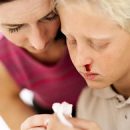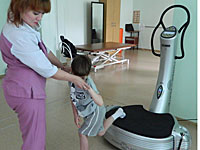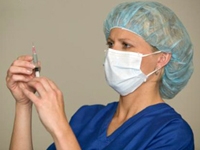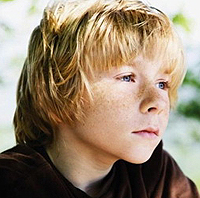Learn all about the insidious disease - rubella. The disease is dangerous with complications when the virus gets into the body of a pregnant woman, in other cases shows a light clinical picture.
Content
- Getting to know the rubella virus
- Why dangerous rubella during pregnancy, virus diagnostics
- Clinical signs of rubella
- Rubella: treatment and possible complications
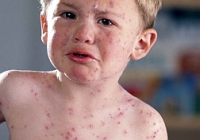 Rubella — in Latin call «Third disease», which is known as rubella. She received the third place in the list of diseases for whom the skin rashes are characterized in children. The disease has already been 274 years old, it refers to the discharge of epidemic, and therefore contagious. It causes a virus that is almost harmless to the child and is seriously dangerous for adult, in particular for a pregnant woman. Rubella is able to cause abnormal development of the fetus and miscarriage. The most frequent defects were combined into a classic congenital rubella syndrome, or Greg Syndrome: Cataract, Deafness and Heart Pathology. Once of overdue to her, a persistent immunity is formed in the body.
Rubella — in Latin call «Third disease», which is known as rubella. She received the third place in the list of diseases for whom the skin rashes are characterized in children. The disease has already been 274 years old, it refers to the discharge of epidemic, and therefore contagious. It causes a virus that is almost harmless to the child and is seriously dangerous for adult, in particular for a pregnant woman. Rubella is able to cause abnormal development of the fetus and miscarriage. The most frequent defects were combined into a classic congenital rubella syndrome, or Greg Syndrome: Cataract, Deafness and Heart Pathology. Once of overdue to her, a persistent immunity is formed in the body.
Getting to know the rubella virus
Rubella virus, hitting the carrier on the mucous respiratory tract, is carefully attached, it is deeply immersed in the fabric, and hitting the lymphotok, is distributed throughout the body. As soon as the virus spread enough, rash appears. Rubella intracellular virus carefully supplied itself with a double membrane sheath. Penetrating into the RNA molecule, he covers it with his double «Cloak» — Togo. This property made it possible to classify it to the group of Togavirus. But this «clothes» It helps only inside, because the virus is very susceptible to the manifestations of the external environment:
- at 22°C lives only 2-3 hours;
- It is afraid of alkali and an acidic environment;
- dies at a temperature of 56°WITH;
- afraid of dryness, UFO;
- dies from dees basin, formalin, ether.
Those who do not have immunity in 90% of cases are infected with rubella. Virus seasonal, shows activity in winter and spring, more often hitting not graft children from 2 to 9 years.
Rubber transfer paths:
- airborne drip;
- Transplascent (during pregnancy the fetus through the placenta from the mother is transmitted by the virus);
Causes of radiant infection:
- Contact with a sick person in any period of the course of the disease;
- Congenital rubella (the child will be a virus monitor before the onset of 3 years of age).
The most dangerous period — a week before the appearance of a rash (about a week after infection) and within a week after the disappearance of the rash.
Why dangerous rubella during pregnancy, virus diagnostics
Analysis on rubella during pregnancy enters the list of bargaining infections. The ability to cause rules of development of Rubella is obliged to absolutely penetrate the embryo tissue, bypassing the placenta. It slows down the process of fissioning embryo cells at the moment when all systems and organs of the future person are formed. The risk of developing pathology is inversely proportional to the period of pregnancy, which has occurred: In the first trimester, the risk of developing the pathology of the fetus is 25%, and at the beginning of the second trimester is almost equal to zero. If a pregnant woman has become infected with a rubella virus, the disease can manifest themselves with Greg syndrome or provoke a miscarriage.
Diagnostics involves passing the analysis to rubella (for ELISA — Immuno enzyme analysis and other). In the serum will be a high level of immunoglobulin M (IgM) confirming the presence of the virus. Conduct a visual inspection of ravis, a virus is revealed in feces and nasopharynx.
Clinical signs of rubella
After infection takes 2-3 weeks, after which the virus begins to actively manifest itself in the body. Signs of rubella:
- Fever up to 38°WITH;
- headache;
- an increase in lymph nodes 1-2 days before the appearance of rash;
- pharyngitis;
- conjunctivitis;
- articular pains with redness and swelling;
- Spotted rash appears after two days on the face, gradually for 2-3 hours spreading to the whole body. The character of the rash looks like a cortex, later on Scarlantine, she is localized on face, lower back, buttocks, in the fiba of the limbs. Disappears maximum after 7 days.
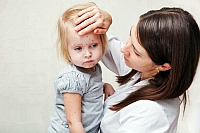 In the blood, the virus provokes the generation of hemmaglutinin, which causes gluing erythrocytes, and also launches the dermatotropiscus process — finely food lesions of the dermal layer of the skin. «Stuck» in the skin, erythrocytes are manifested with a rash.
In the blood, the virus provokes the generation of hemmaglutinin, which causes gluing erythrocytes, and also launches the dermatotropiscus process — finely food lesions of the dermal layer of the skin. «Stuck» in the skin, erythrocytes are manifested with a rash.
Congenital rubella is characterized by the presence of Greg Triad. But rubella would not be rubella, if it had not caused such vices like hydrocephalus, wolf fall, hunger lip, teenage sclerosing pankenefalite (PSE), which is able to reduce intelligence and form motor disorders.
Rubella: treatment and possible complications
Due to the soft, and sometimes asymptomatic flow during rubella is recommended:
- bed mode week;
- full nutrition;
- Drug: immunomodulators, stimulants, viracides, hormones, diuretic;
- abundant drink;
- Symptomatic therapy.
Basic «treatment» aims to prevent rubella — in the form of vaccination and vaccinations.
Possible complications include: pneumonia, encephalitis, meningitis, arthritis, otitis.


